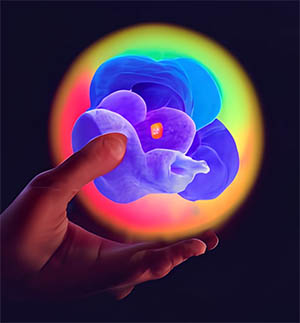Conceptual synesthesia
Synesthesia, a neurological phenomenon in which one sense involuntarily triggers another, is known to create a rich and vivid inner world for those who experience it. While the most common forms of synesthesia involve the perception of colors, sounds, and shapes, there is a less understood type known as conceptual synesthesia. This rare form of synesthesia involves the involuntary association of abstract concepts, such as emotions or numbers, with sensory experiences. In this article, we will explore the fascinating world of conceptual synesthesia and the unique ways in which it manifests itself in the minds of those who experience it.
What is Conceptual Synesthesia?
Conceptual synesthesia is a type of synesthesia in which an individual involuntarily associates abstract concepts with sensory experiences. For example, someone with conceptual synesthesia might perceive the concept of love as a warm, pink glow or the number three as a round, red shape. These associations are unique to each individual and can be incredibly vivid and intense. Unlike other forms of synesthesia, conceptual synesthesia does not involve the direct perception of physical sensations but rather the connection between abstract concepts and sensory experiences.

Types of Conceptual Synesthesia
There are several different types of conceptual synesthesia, each with its own unique characteristics and associations.
- Emotional Synesthesia: Emotional synesthesia involves the association of emotions with specific colors, shapes, or textures. For example, someone with emotional synesthesia might associate happiness with a bright yellow glow or sadness with a dark, heavy weight.
- Spatial Synesthesia: Spatial synesthesia involves the association of abstract concepts with spatial relationships. For example, someone with spatial synesthesia might see time as a physical space, with past events located behind them and future events ahead of them.
- Number Synesthesia: Number synesthesia involves the association of numbers with specific colors or shapes. For example, someone with number synesthesia might see the number five as a blue triangle.
- Time-Space Synesthesia: Time-space synesthesia involves the perception of time as a physical space, with events located in specific places within that space. For example, someone with time-space synesthesia might see the past as located to their left and the future as located to their right.
- Ideasthesia: Ideasthesia involves the perception of abstract concepts as physical sensations. For example, someone with ideasthesia might feel a physical sensation when they hear a specific word or think about a certain concept.
Causes of Conceptual Synesthesia
The exact cause of conceptual synesthesia is not yet fully understood. However, researchers believe that it is a result of increased connectivity between different regions of the brain. In individuals with conceptual synesthesia, there may be an increased number of connections between the regions of the brain responsible for processing sensory information and those responsible for processing abstract concepts.
Symptoms of Conceptual Synesthesia
The symptoms of conceptual synesthesia can vary widely between individuals. Some common symptoms include:
- Involuntary associations between abstract concepts and sensory experiences.
- Vivid and intense sensory experiences associated with abstract concepts.
- Consistent associations between specific abstract concepts and sensory experiences.
- Difficulty distinguishing between the sensory experience and the associated abstract concept.
- Enhanced memory for associated sensory experiences.
Treatment for Conceptual Synesthesia
There is currently no known cure for conceptual synesthesia, and treatment is not usually necessary. Many individuals with conceptual synesthesia view their experiences as a unique and positive aspect of their lives. However, in some cases, individuals with conceptual synesthesia may experience distress or anxiety related to their experiences. In these cases, therapy or counseling may be helpful in managing these feelings and developing coping strategies.